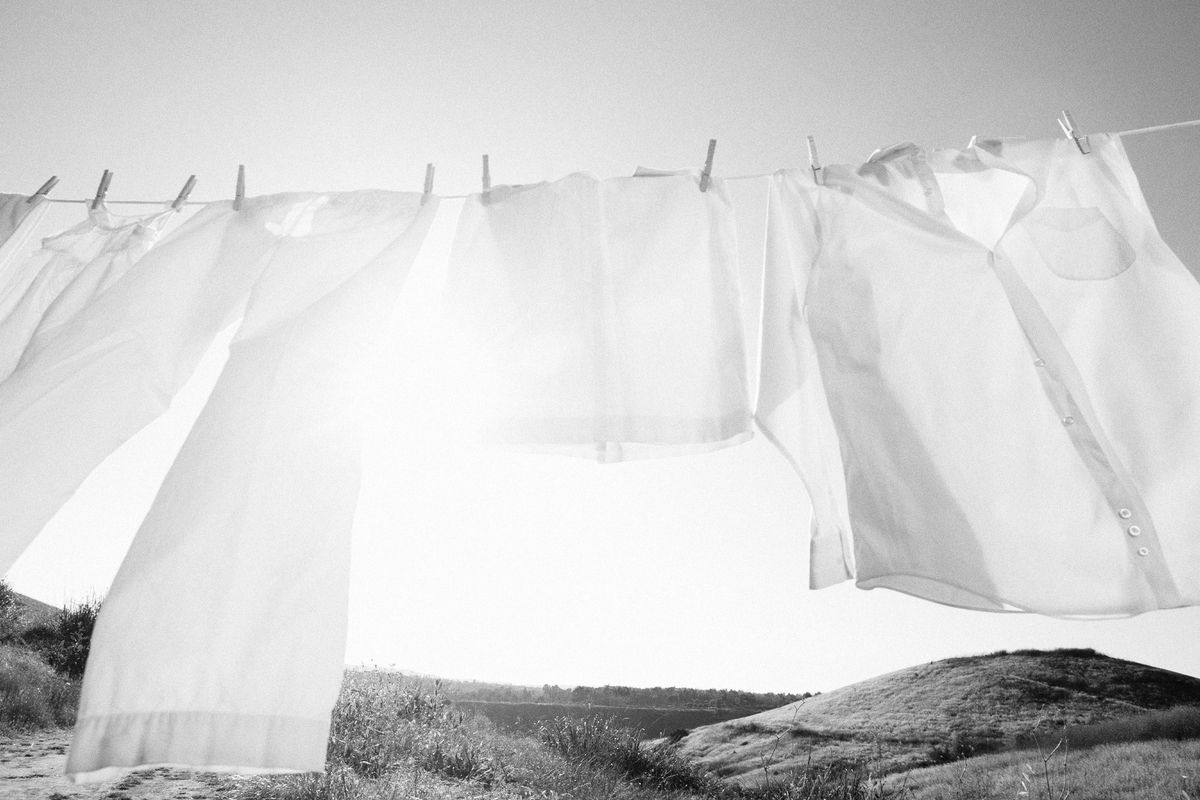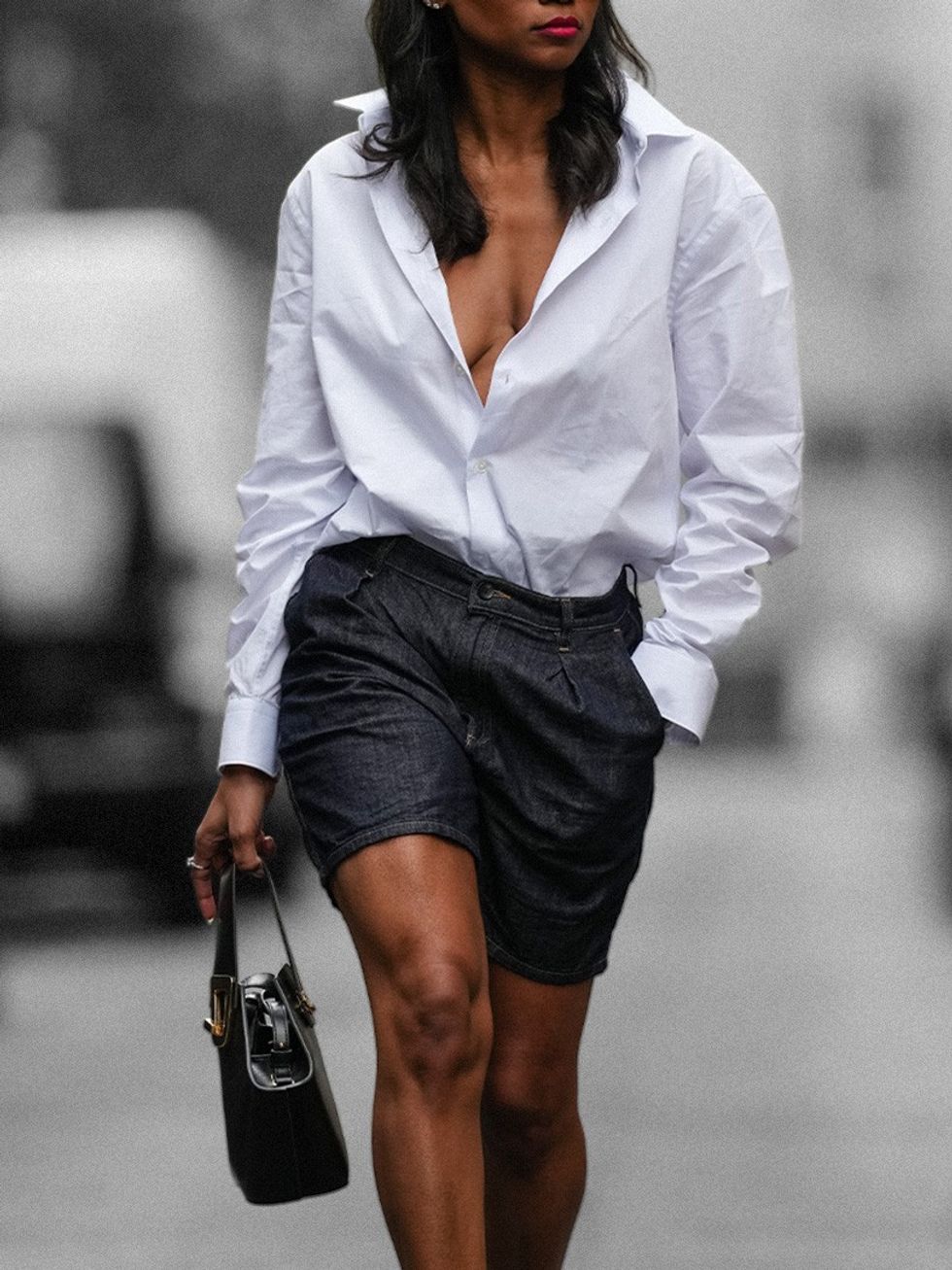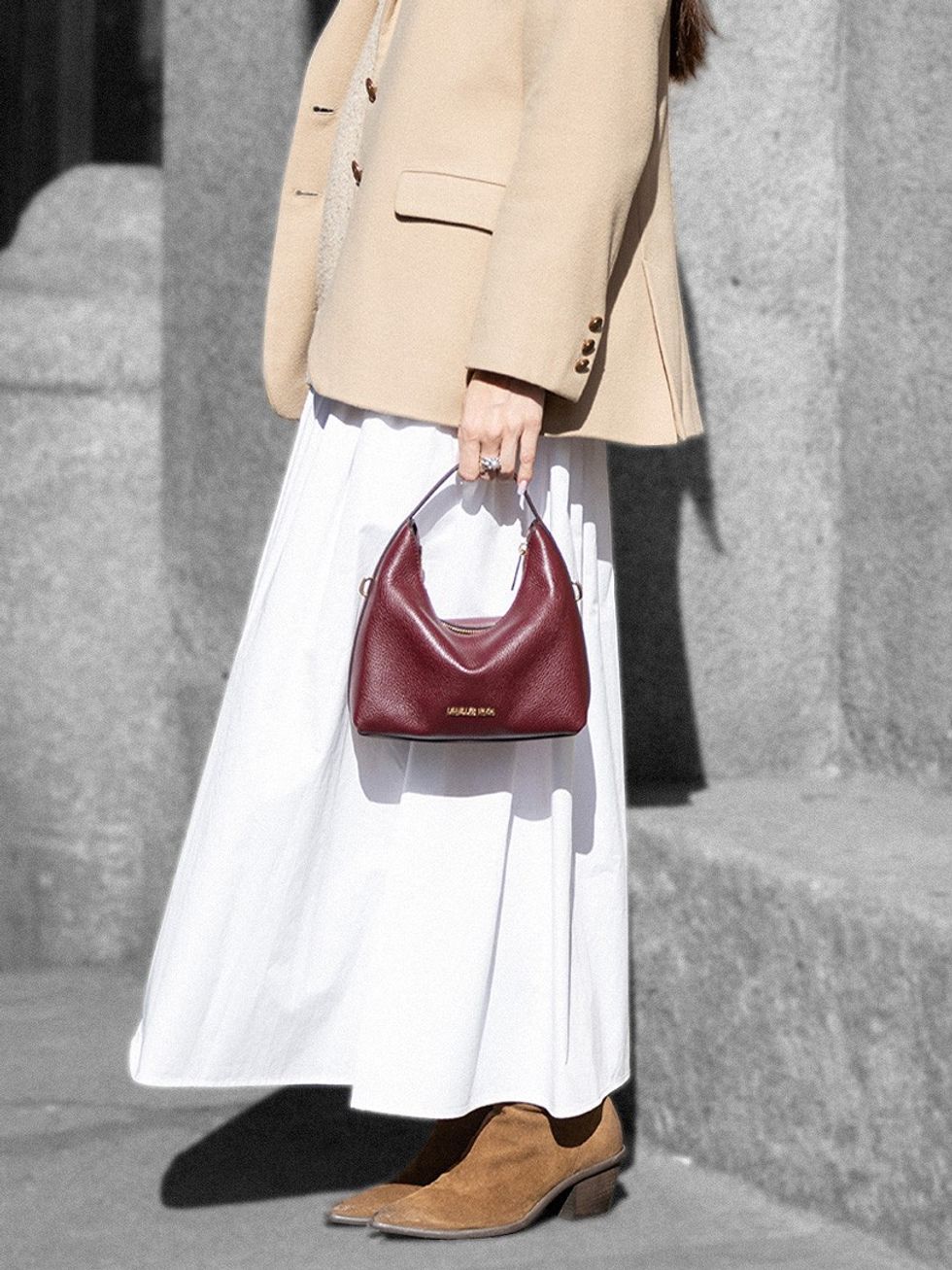
Erik Isakson/Getty Images
Back in 2023, the writer Harling Ross Anton shared a piece on her Substack Gumshoe titled “The One Shopping Habit I Swear By.” The shopping hack in question: checking the tag of a potential purchase for the fabric content breakdown. “If it’s not made of cotton, silk, wool, or cashmere, I’m probably not buying it,” she wrote at the time.
Anton isn’t the only consumer who is looking past trends and silhouettes and paying strict attention to exactly what a piece is made of. On social media, influencers are posting 100% natural fiber clothing hauls, offering recommendations to followers of where they can shop for pieces made from the kind of fabrics that have existed for hundreds, if not thousands of years. Interest in perfectly-soft cotton tees and bias-cut silk slip dresses is by no means new, but as cultural discourse around both wellness and waste advances, there’s increased attention once again to what shoppers are putting on their bodies in addition to what they put in them. The customer looking for clothing made from natural materials “is someone who is looking for longevity along with breathable fabrics that are built to last, feel beautiful on the skin, and often transcend seasons,” says Caroline Belhumeur, creative director at Vince.
If one fabric was to top them all, it would be cotton. It’s breathable, absorbent, and naturally hypoallergenic. It also happens to transcend every category of clothing. From classic button-downs made in a stiff cotton poplin to perfectly slouchy 100% cotton jeans, the material is likely already a major part of your closet.
While luxury labels have touted the use of natural materials as a signifier of high-quality construction, don’t be fooled into thinking it's a shopping choice limited to expensive goods, only. Affordable everyday basics like all-cotton tees and breathable underwear are just as valuable additions to your closet. Beyond the everyday wardrobe, consumers are also looking to natural fabrics for comfort at home, preferring towels and bedsheets also fabricated in 100% cotton. “Natural materials are associated with timeless pieces,” says Belhumeur. “There is a tendency for more people to shop with [a longevity] mindset today as a way to be more responsible.”

Edward Berthelot/Getty Images

Raimonda Kulikauskiene/Getty Images
The Sustainability Perspective
While the most sustainable thing you can do is re-wear the clothes you already own, when buying something new, consider the effect that your purchase can have on both the environment and you. For @chez.collen on Tiktok, shopping for natural fibers is specifically an effort to avoid clothing made with plastic. As more information becomes available about the pervasiveness of microplastics, some shoppers are looking to reduce their exposure by avoiding anything made with nylon or polyester. Cotton is also generally considered a durable fabric, especially when compared to some synthetic options. Its strength and durability are due to the strong fibers that make up the fabric, making it suitable for items that get frequent use and washing.
Gen Z, which is estimated to have $12 trillion in spending power by 2030, is a generation whose consumption habits are shaped largely by values—with authenticity and social consciousness serving as important factors when making a purchase. As such, they’re looking to brands who set an example in transparency, whether it be about materials, production practices, or values. If your interest in natural materials is in part environmental, there are learnings such as microplastic pollution that you can seek out to aid you in picking out something brand new.
Additionally, as secondhand shopping’s popularity continues to grow, thanks both to sustainability and price, you can check the tag for the material makeup of your purchase, keeping an eye out for vintage styles made with all natural materials. The argument for shoppers is not that natural fibers inherently hold up better over time, it’s that they are ultimately biodegradable meaning that once the clothes are thrown away, they won’t sit in the landfill eternally.

Valentina Frugiuele/Getty Images

Christian Vierig/Getty Images
For those seeking out 100% cotton or other natural materials from a wearability perspective, there’s an undeniable comfort that comes from a natural material that’s inherently breathable. Especially as things heat up in the summer, cotton and linen are both fabrics that can help keep you cool where synthetics can hold smells and leave you sweaty. A 2024 study showed that 73% of U.S. consumers state that cotton is their favorite fabric to wear. Soft, lightweight cotton not only allows the body to breathe, but feels luxurious on the skin, never rough or scratchy. But this sort of worn luxury can be found at a wide price range, from affordable shops like The Gap or Madewell, to European fashion houses like Prada or Gucci. As a shopper, you can easily stock up on staple everyday basics or pick out a seasonal splurge—all while sticking to natural fibers. Just take it from Olivia Susskind and this expert level haul.
The Comfort Perspective
Belhumeur explains that 100% cotton and silk are authentic to the Vince brand. “These fabrics and yarns, along with cashmere and wool, are traditionally used in our collections because they wear well, are seasonless, and the touch of these yarns feels very rich.” As shoppers look to invest in pieces that will stand the test of time, a cotton button-down or a staple tee will not only survive the rapid speed of the trend cycle, they will be just as comfortable years into wearing them as they were the day they came home.
Ultimately, if shopping responsibly is your goal, instead of swapping out your entire closet to consist only of natural fibers, you’ll reduce waste most effectively by slowly integrating more cotton into your wardrobe—the thoughtful and strategic choice for a sustainable and long-lasting wardrobe.
Learn More




